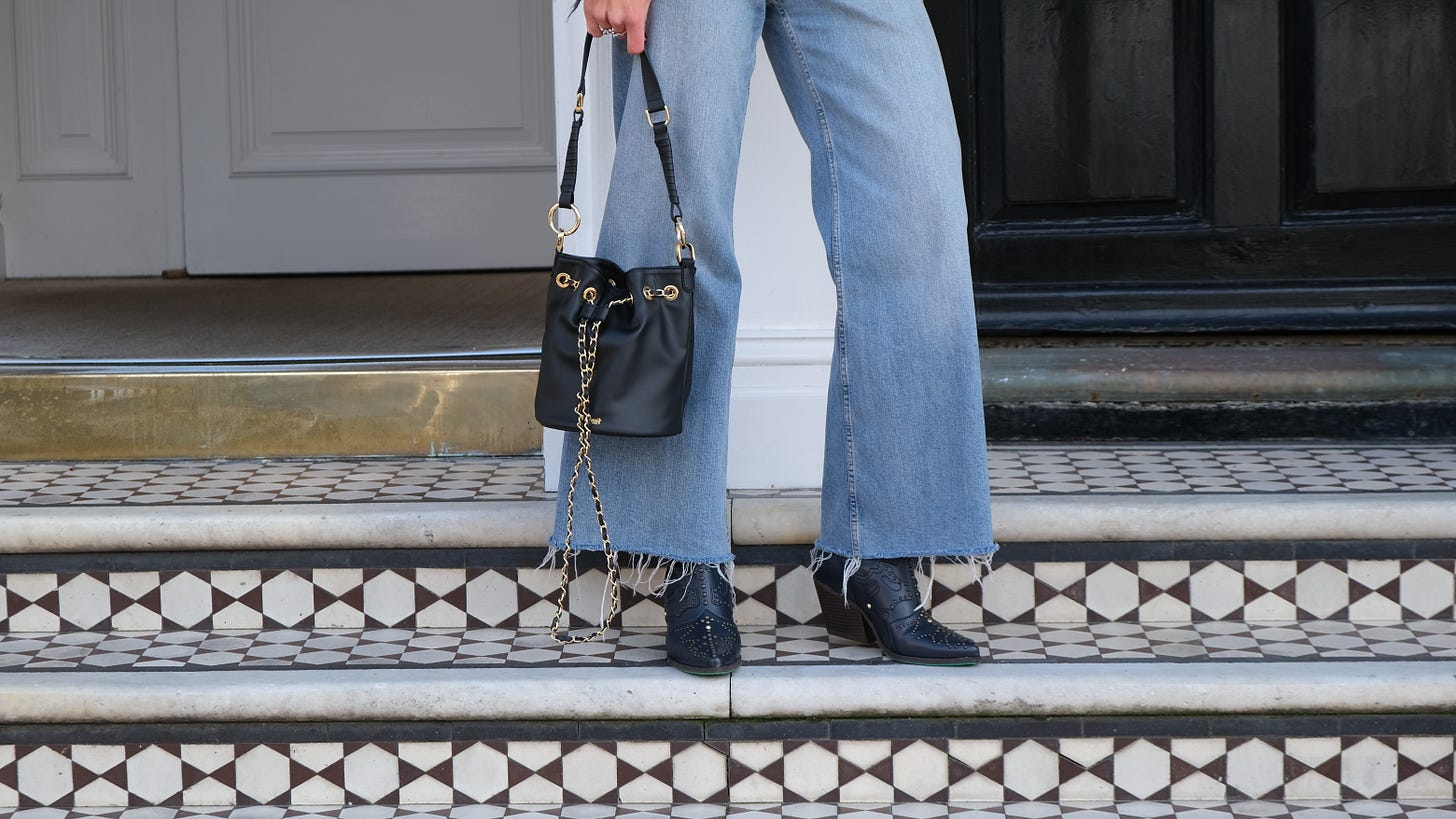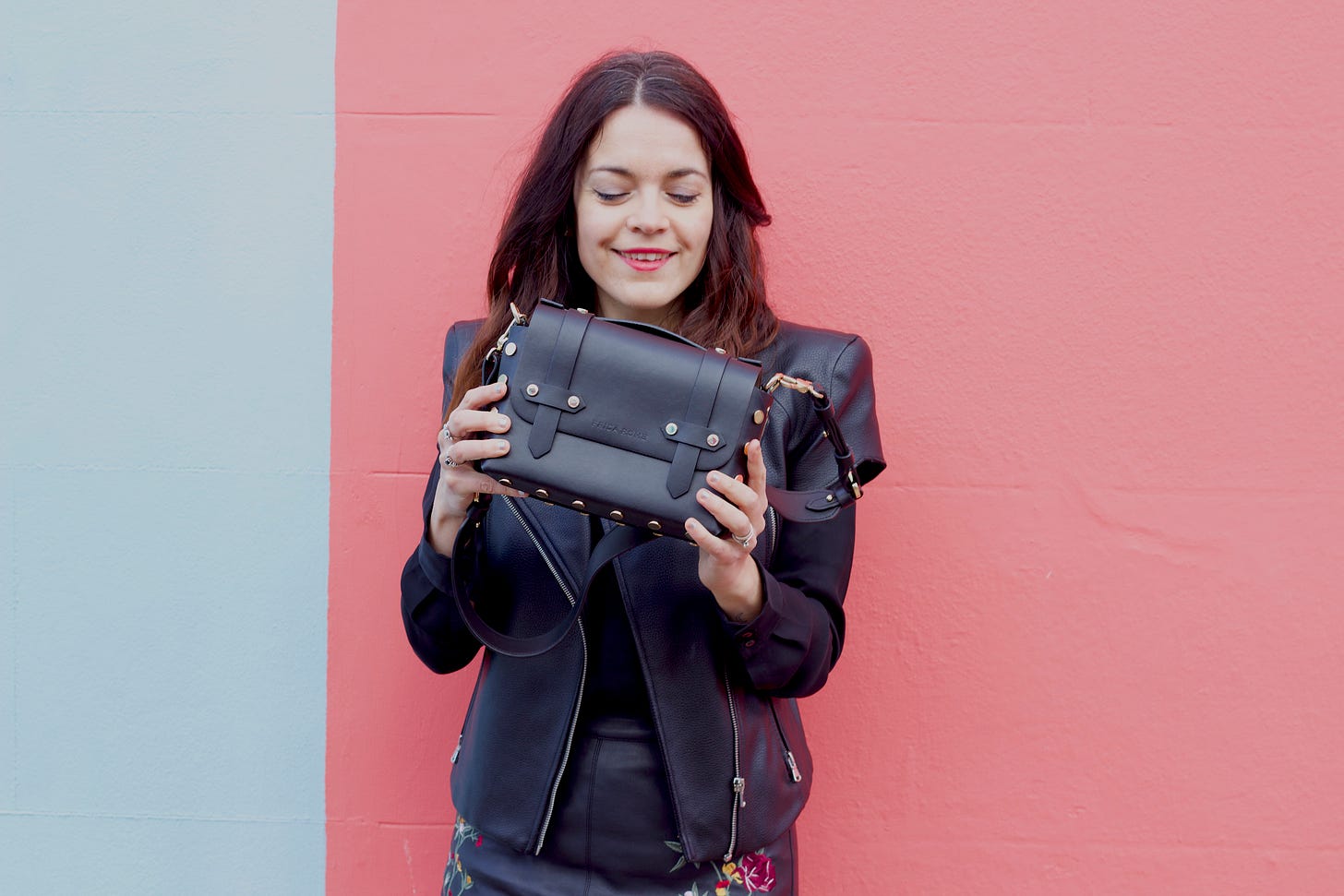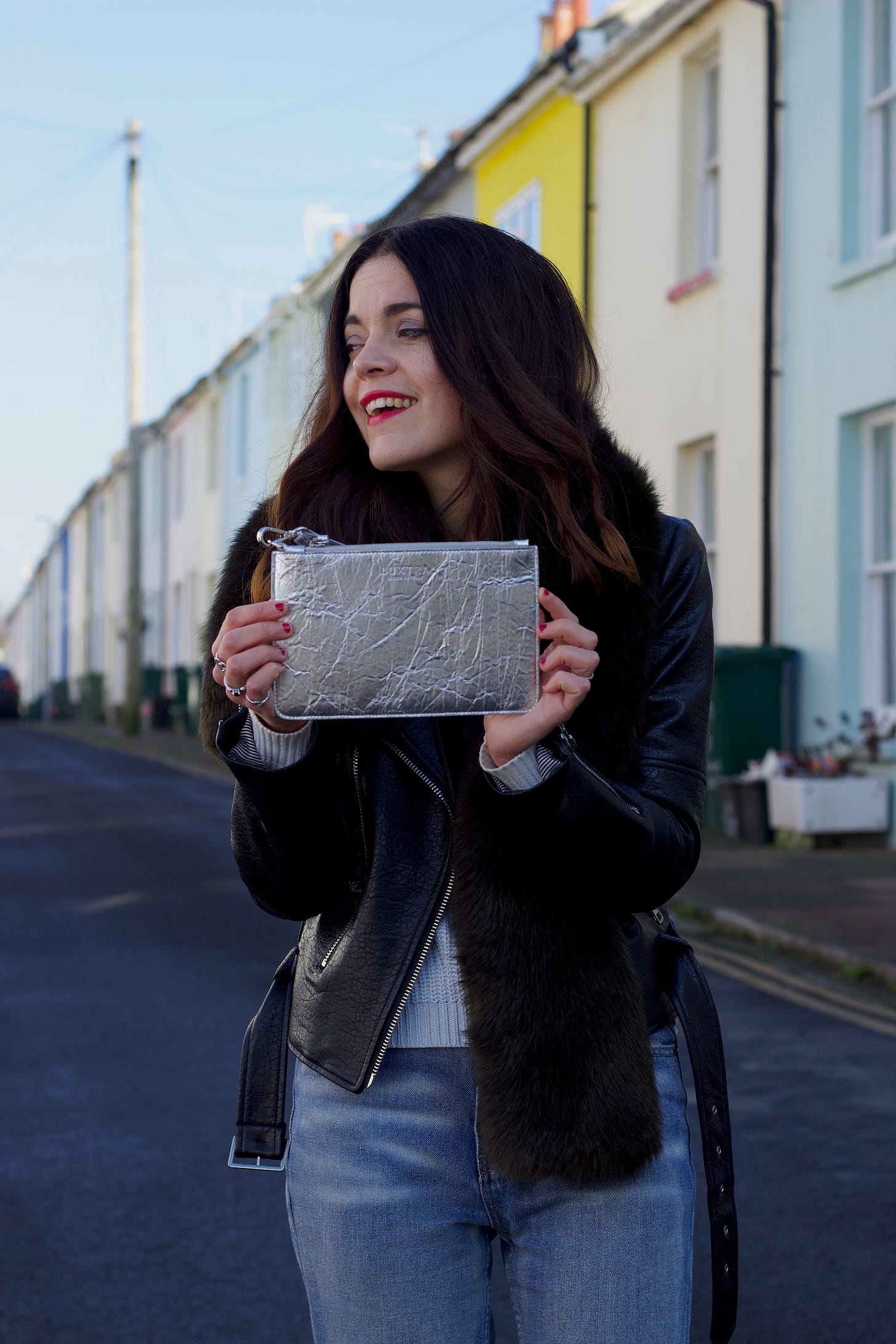This post contains affiliate links.
Have you ever thought, “if I’m asked this question one more time, I might scream”? I have.
I have been working in the area of vegan living and vegan fashion over a decade, and throughout my time in this field, the number-one question I’ve, to put it mildly, heard more than enough times, is: but isn’t vegan fashion just plastic?
The dead cow versus plastic dilemma
The (tired and dated) idea that vegan fashion = plastic comes from a time not very long ago when, well, it was largely true. When I was growing up, deciding not to wear animal skins meant that you were stuck with shiny, cheap-looking “pleather” that made squeaky noises when you moved. Often, it was made from PVC, a material so environmentally damaging that it’s been repeatedly named the most poisonous plastic by Greenpeace and others. Vegan wool or fur were almost exclusively made from acrylic or poly-blends - not exactly friends of the environment.
I remember with shame how, in my early vegan days I vehemently defended plastic fashion. I’m ashamed now to recall how many people commented on my blog back then to call out my constant promotion of low-grade fast fashion just because it was technically vegan, and how I doubled down. The truth was that deep down I knew I was in the wrong. But I felt cornered, because back then, as a vegan, there weren’t many other options.
Well, how times have changed.

Is it a fruit plate or is it fashion?
I must say I chose an exceptional time to start speaking and writing about vegan fashion. In the years I’ve been doing this work, we’ve seen progress skyrocketing: we’ve seen Chanel make hats from pineapples, bags made from apples, Stella McCartney going foraging for mushrooms to make clothes, H&M raising a glass to wine grape leather, Karl Lagerfeld and supermodel Amber Valletta collaborating on a bag crafted from cactus, and Hermès joining Stella on the mushroom-picking expedition. In the last few years, material innovation has done its very best to convince us that leather can be made from things other than a dead cow or a heap of toxic synthetics.
But the leather industry is cunning and clever, and it’s terrified of developments like Helsinki Fashion Week banning leather (which, well, let’s say yours truly had something to do with it!). So industry insiders set out to “reveal” a horrible truth about plant-based leathers: they still contain plastic! All these pineapple leaf fibres, this apple waste, these mushrooms and cacti…they have to be coated in plastic for durability.
This is definitely true. Although some plant leathers can be made from up to 90% bio-based content, most of them still require a polyurethane coating in order to last. But please do not forget that so does animal leather.
Big reveal: animal leather is not always plastic-free. Or biodegradable
Despite touting itself as the biodegradable option, the leather industry conceals the simple fact that, just like apples and mushrooms, cow skins are a natural fibre that starts decaying as soon as it’s taken off the dead animal. To preserve the hides, they are treated with a toxic cocktail of harsh chemicals such as chromium, aluminium, and coal-tar derivatives. And “vegetable tanning” is pretty much meaningless: a report from fashion house Kering has found that over 90% of leather’s environmental damage comes from before the tannery stages - this is referred to the astronomical environmental cost of raising animals for human consumption. But that is an issue for a whole different post.
To ensure that the skins are as “long-lasting” as the industry claims (peculiar how it is “completely biodegradable” yet will also “last you decades”, don’t you think?), leather often has a coating of…you guessed it, plastic. It’s just that we don’t know about it.
The brilliant writer Jessica Scott-Reid interviewed one of my favourite activists, Emma Håkansson, in a story where Emma explains how labelling regulations allow the leather industry to get away with using plastic without having to tell consumers:
“Current labelling laws across large parts of the world, including in major fashion markets, allow for leather to be coated in plastic without this being noted on a product label, so long as the percentage of plastic stays within a certain boundary.”
Emma’s organisation, Collective Fashion Justice, is dedicated to unveiling the harm behind the leather trade. Having produced multiple reports into the impact of the industry on animals, humans, and the environment, CFJ can attest that after the tanning process, leather is, in fact, no longer biodegradable.
Okay, but is anything plastic-free?
Synthetics are incredibly pervasive in the fashion industry. Different forms of petroleum-derived fibres, and other uses for fossil fuels, constantly find their way into the garment supply chain. It’s a depressing reality of our modern society - but it’s not one we just have to take lying down. Material innovation is presenting astonishing results: vegan fur, for example, is increasingly doing away with plastic. French faux-fur artisans Ecopel are moving away from the old trope of fake fur made from synthetics, with the creation of their 100% bio-based material Flur. Another development in faux fur is BioFluff’s Savian material - with this entirely plant-based fur, the company has worked with Ganni and Stella McCartney.
When it comes to leather, it’s material innovation to the rescue again. At PETA, we handed US-based company Natural Fiber Welding the Innovation Award in our 2022 Fashion Awards for their material Mirum, which is entirely made from plant oils and waxes, without any petroleum components. It’s vegan leather - minus the plastic.
One designer who champions Mirum is Melina Bucher, who has made several bags with the material. An absolute game-changer in animal-free fashion, Melina recently launched her own workshop for vegan leather artisans in Germany. I had a chat with her about working with Mirum, and this is what she had to say:
When I founded my brand in 2019, it was all about creating vegan and high-quality items that will be a wardrobe staple for a long time. When I learned more about the impact on plastics for the environment, I decided that this is not what I want to put out in the world and started to look for alternatives. There is where I got to know Natural Fiber Welding. At that time, they only had very small samples, but the strong vision to create the very first completely plastic-free vegan leather material. So we worked with them during development and ultimately where one of the first brands worldwide to launch a handbag made out of their amazing material.
The material is a completely new technology so we actually spent a lot of time in learning how to design and manufacture with it to make it shine. It neither behaves exactly like an animal leather nor a synthetic material and you need special know-how to use it. But if you have that, it is a very durable material that is very stain and water resistant. Which makes it excellent for an every day handbag.
The future is biofabricated
There have been whispers about biofabricated leather for as long as I have been working in the field of vegan fashion. So long, in fact, that we’re all starting to wonder whether this miraculous material will ever come to fruition. But things are moving along: just recently, researchers at Imperial College London genetically engineered bacteria to grow a plastic-free, self-dyeing vegan leather. Companies like Modern Meadow have worked on harnessing the power of bio-fabrication to bring lab-grown leather to market, and while it’s not the quickest development the world has ever seen, the opportunities are definitely there.
at Vegan Dispatch has a great piece on biofabricated leather, laying out more detail about the process, properties, and potential.Improvements needed: plastic-free vegan wool
Truth time: whenever I’m asked about vegan wool that isn’t plastic, I squirm. Sure, I’ve written a lot about the topic, and can recommend destinations for shoppers looking for something more eco-conscious than your traditional poly-blend, but the truth is, vegan wool is nowhere near vegan leather when it comes to the level of innovation. Sure, we have organic cotton. We have recycled fibres. We have some small, niche companies selling hemp blends. But where are all the amazing plant-based wools? Where’s the wool made from pineapples and food waste? Leaves and flowers? How is this not a thing yet?
(yes, I do know about the one-off companies creating coconut wool, soybean cashmere and the like. But many of these materials aren’t commercially available or used by brands, and, as we all know, that makes all the difference.)
Anxious to see innovation catch up, PETA US has launched a competition offering one million dollars (yes indeed) to those able to come up with the plant wool of the future. I for one cannot wait to see the results. I’m also curious to see what Furoid cook up - this company is bringing that bio-fabricating magic to fur and wool alike, and the results are bound to be mind-blowing.
Conclusion: vegan fashion is and isn’t made from plastic. Plastic is sadly present in so many parts of our society, especially fashion. But while vegan material innovation is working to address these concerns, the animal skins industries just keep killing animals. I know which one I’d bet on for the future I want. What about you?
Vegan leather pieces in this issue:
Cactus leather bag, FRIDA ROME
Grape leather bag, Minuit Sur Terre
Apple leather shoes, A Perfect Jane
Pineapple leather clutch by LUXTRA London, who sadly closed down
All the above items were kindly gifted to me by the brands.
Plastic-free Mirum bag, Melina Bucher
All photos of me by David Camilli.
Melina Bucher photo courtesy of Melina Bucher.







So interesting and informative! I can't wait to try the wool alternatives. As well, the soybean cashmere sounds nice. My hope is that even non-vegans will start buying all these beautiful innovative, vegan products. Great post!
Such a cool thing, if you think about it, to be able to make bags out of fruits!